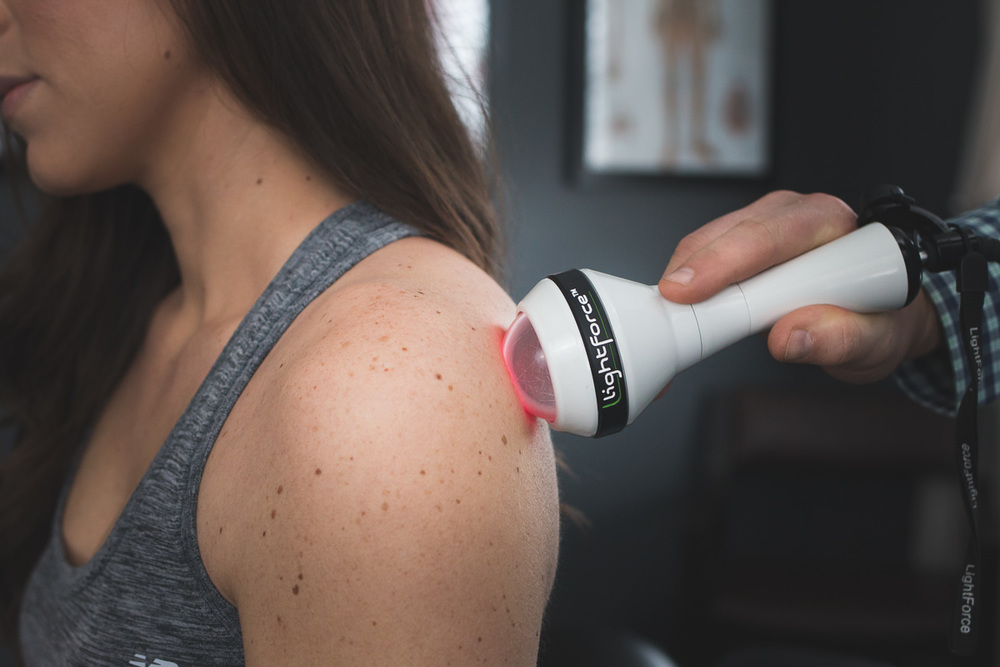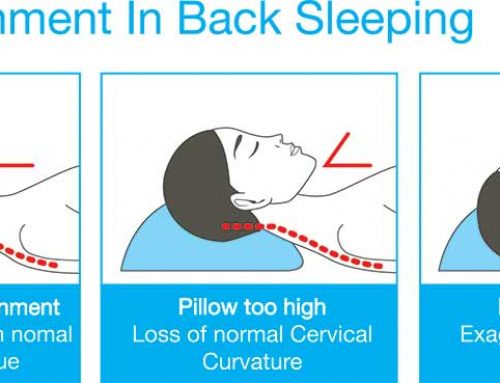
Muscle injury can be caused by a number of things. Acute injuries come as the result of a trauma, often occurring during sports, while repetitive muscle injuries are caused by overuse. Even sitting still can cause muscle pain and injury. People who work at a desk all day often experience posture-related back or neck pain.
Whatever the origin, muscle injuries can slow you down – and even put you on the sidelines long-term.
Understanding the Inflammatory Process
When your body is injured, irritated, or suffering from an infection, the affected cells send out a distress signal. Your immune system responds by producing inflammation. This inflammatory response is a vital component of your body’s natural defense system and is how your body heals. However, long-term inflammation can cause a cascade of ongoing health issues.
Muscle pain is often rooted in spinal misalignment, and joints have to work overtime trying to compensate for an out-of-balance backbone.
Modalities to Treat Muscle Pain and Injuries
Your chiropractor has several options for helping to reduce pain and inflammation, and to help you heal from muscle injury. Modalities are therapeutic techniques that may involve particular methods or devices. Depending on the type of muscle pain or injury you’re dealing with, your chiropractor may recommend a combination of modalities as part of your treatment plan.
The following are some modalities a chiropractor can use to treat muscle pain and inflammation.

- Cold Therapy Cold therapy, or cryotherapy, is usually the first modality used to reduce pain and inflammation immediately after an injury. Cold constricts blood vessels, which slows down blood flow. This can reduce bruising, swelling, pain, and inflammation.
- Heat therapy Heat therapy, often used in conjunction with other modalities, enhances blood flow. This can help increase the flow of oxygen to the injured tissues, which can aid and speed up healing. Heat also helps to decrease muscle stiffness and pain, which can increase your range of motion.
- Ultrasound Ultrasound therapy involves the use of sound waves, which penetrate deep into the tissues. The sound waves create a “deep heat” that helps to increase blood flow and oxygen delivery.
- Iontophoresis and Phonophoresis These techniques are used to help topical medication penetrate more deeply into the tissue. Iontophoresis uses an electrical current to achieve this, while phonophoresis involves the use of ultrasonic waves (ultrasound).
- Electrical Stimulation This kind of treatment uses electrical currents to affect the muscle tissue and bring relief from pain and inflammation. TENS therapy and H-Wave therapy are both electrical stimulation modalities.
Soft Tissue Techniques for Muscle Injuries

There are a number of soft tissue techniques your chiropractor can use treat and help heal a muscle injury.
- Trigger Point Therapy This kind of soft tissue therapy involves using expertly applied pressure on specific “trigger” areas of your muscle tissues. These trigger points can be epicenters of muscle pain, and trigger point work can create significant pain relief.
- Kinesio Taping For this type of treatment, special tape is placed strategically on the skin. This gently re-arranges underlying tissues in order to take pressure off muscle areas that are strained or stressed.
Depending on your specific circumstances, one or more soft tissue techniques might be in order. Talk to your chiropractor about other soft tissue methods that may be beneficial to you.
Chiropractic Adjustments for Muscle Therapy
Since muscles, joints and bones work together, they must be treated in consideration of one another. Chiropractic adjustments can help with spinal alignment, which is a key factor in correcting muscle imbalances and minimizing strain on joints. Through manual manipulation, an experienced chiropractor can help bring your spine back into alignment and help facilitate healing from injured and overworked muscles.






